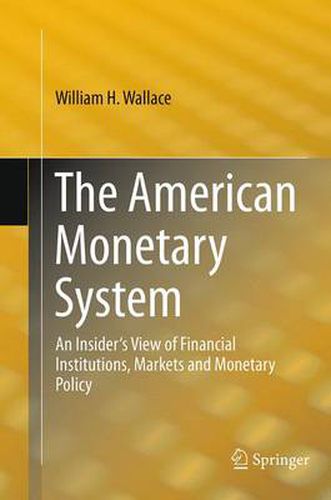Readings Newsletter
Become a Readings Member to make your shopping experience even easier.
Sign in or sign up for free!
You’re not far away from qualifying for FREE standard shipping within Australia
You’ve qualified for FREE standard shipping within Australia
The cart is loading…






This title is printed to order. This book may have been self-published. If so, we cannot guarantee the quality of the content. In the main most books will have gone through the editing process however some may not. We therefore suggest that you be aware of this before ordering this book. If in doubt check either the author or publisher’s details as we are unable to accept any returns unless they are faulty. Please contact us if you have any questions.
Today’s financial system is considerably more complex than in years past, as new financial instruments have been introduced that are not well understood even by the people and institutions that invest in them. Numerous high-risk opportunities are available, and the number of people who unwittingly wander into such ventures seems to grow daily. There is also the realization that people’s lives are affected by the financial system without their overt participation in it. Despite no active participation, pensions can be emasculated by a sudden decline in interest rates, or a rise in rates can increase the monthly payments on a mortgage, credit cards or other debt. This book looks at the history of the American banking system, including the passage of the Federal Reserve Act in 1913, the implementation of deposit insurance, along with certain other provisions of the Glass-Steagall Act of 1933, the Bretton-Woods agreements, the forces of technological innovation and the Dodd-Frank Act, passed by Congress in 2010 for regulatory reform. This book will be of interest to undergraduate and graduate level students that want to gain a broad understanding of how the financial system works, why it is important to the economy as a whole, and what its strengths and weaknesses are. Also, readers should gain an understanding of what the Federal Reserve, other regulators and other central banks are doing, and will be in a position to critique their actions and say with some depth of understanding why they agree or disagree with them.
$9.00 standard shipping within Australia
FREE standard shipping within Australia for orders over $100.00
Express & International shipping calculated at checkout
This title is printed to order. This book may have been self-published. If so, we cannot guarantee the quality of the content. In the main most books will have gone through the editing process however some may not. We therefore suggest that you be aware of this before ordering this book. If in doubt check either the author or publisher’s details as we are unable to accept any returns unless they are faulty. Please contact us if you have any questions.
Today’s financial system is considerably more complex than in years past, as new financial instruments have been introduced that are not well understood even by the people and institutions that invest in them. Numerous high-risk opportunities are available, and the number of people who unwittingly wander into such ventures seems to grow daily. There is also the realization that people’s lives are affected by the financial system without their overt participation in it. Despite no active participation, pensions can be emasculated by a sudden decline in interest rates, or a rise in rates can increase the monthly payments on a mortgage, credit cards or other debt. This book looks at the history of the American banking system, including the passage of the Federal Reserve Act in 1913, the implementation of deposit insurance, along with certain other provisions of the Glass-Steagall Act of 1933, the Bretton-Woods agreements, the forces of technological innovation and the Dodd-Frank Act, passed by Congress in 2010 for regulatory reform. This book will be of interest to undergraduate and graduate level students that want to gain a broad understanding of how the financial system works, why it is important to the economy as a whole, and what its strengths and weaknesses are. Also, readers should gain an understanding of what the Federal Reserve, other regulators and other central banks are doing, and will be in a position to critique their actions and say with some depth of understanding why they agree or disagree with them.